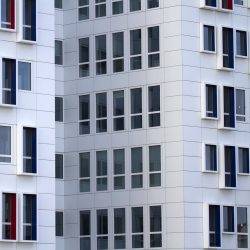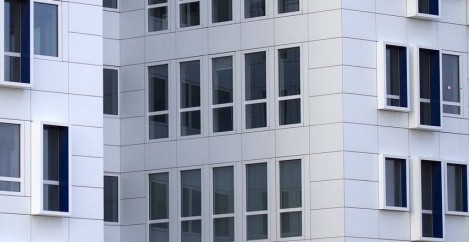January 18, 2019
Employers must take better action to avoid sick building syndrome
 Sick building syndrome is a collective term to describe when occupants of a specific building suffer from a related illness. Problems can either be localised to a specific room or more widespread throughout a building. The symptoms can manifest as headaches, blocked or runny noses, skin irritations, sore eyes or tiredness and difficulties with concentration. A number of building-related factors are linked to the condition with ageing offices and factories acting as magnets for sick building syndrome. Studies have shown that headaches and respiratory problems among office workers were directly related to the use of air conditioning and inadequate ventilation. Room temperature, light and noise, humidity, carbon dioxide, chemical contaminants (volatile organic compounds – VOCs), air quality and naturally occurring poisons can all inflame symptoms for sufferers requiring more precise control over environmental factors in the workplace. Making sure buildings are healthy for their occupants is a challenge.
Sick building syndrome is a collective term to describe when occupants of a specific building suffer from a related illness. Problems can either be localised to a specific room or more widespread throughout a building. The symptoms can manifest as headaches, blocked or runny noses, skin irritations, sore eyes or tiredness and difficulties with concentration. A number of building-related factors are linked to the condition with ageing offices and factories acting as magnets for sick building syndrome. Studies have shown that headaches and respiratory problems among office workers were directly related to the use of air conditioning and inadequate ventilation. Room temperature, light and noise, humidity, carbon dioxide, chemical contaminants (volatile organic compounds – VOCs), air quality and naturally occurring poisons can all inflame symptoms for sufferers requiring more precise control over environmental factors in the workplace. Making sure buildings are healthy for their occupants is a challenge.
Impacting on our health and wellbeing
A YouGov survey commissioned by the Building Engineering Services Association (BESA) reported that almost 70% of office workers believed poor air quality in their place of work was having a negative effect on their day-to-day productivity and well-being and with most of us spending 90% or more of our time indoors it is having a detrimental effect on our long-term health. The Lancet reported pollution in the workplace was linked to 800,000 deaths globally.
The health impacts associated with poor outdoor air quality are well-documented and have been linked to respiratory tract infections, lung cancer and chronic obstructive pulmonary disease. Indoors, you’ll find these same pollutants intermingled with dust, carpet fibres, fungal spores, cleaning products, photocopy residues or building materials, which create quite an unhealthy cocktail of contaminants that eventually permeate across the workplace.
Causes
Inadequate ventilation is a major contributor to sick building syndrome. In our bid to save energy, reduce costs and harm to the environment, buildings have almost become hermetically sealed. In fact, the trend for older buildings (circa: 1970) had been to incorporate sealed window units that prevented occupants from opening them. While energy was saved it was to the detriment of the people inside. There are still some buildings without any natural ventilation or installed forced ventilation leaving absolutely no option to ventilate in an automated way.
Some people are particularly susceptible to VOCs (Volatile Organic Compounds) which can arise from cleaning chemicals, paints, carpets, office equipment and people in the office or come in from outside pollution through windows or unfiltered ventilation systems. In even low concentrations they can cause eye, nose and throat irritation, headaches, nausea and damage to the central nervous system.
While opening windows is the simplest way to ventilate a room and is the most natural thing to do, there is the risk of the air quality being worse than it is inside particularly, if your office building is urban or in/near an industrial environment. Outdoor air could also enter through air ducts and other openings. Outdoor pollutants are principally the products of combustion from atmosphere heating, power generation or from motor vehicle traffic. Fine dust, small particles, can find its way into the lungs and cause diseases from asthma to cancer.
Anywhere where stagnant moisture can build is a breeding ground for viruses, bacteria and mould. Humidity levels, either too high or too low, have a significant effect on the spread of biological contaminants.
Providing adequate light of quality, similar to daylight, is probably as good as it gets. Energy-saving bulbs may save you money but invariably, these are dim and can cause eyestrain or discomfort. Poor lighting can affect the quality of people’s work, particularly where precision is required. A lack of natural light can affect our moods.
What can be done?
Businesses have been showing interest in all kinds of solutions to help improve the work environment including physical redesigns, retrofit options for older buildings or total room automation technology solutions. Fitting out offices isn’t just good for boosting staff morale with a nicer working environment. Better building design can also leave a positive impression on prospective employees. Modern state-of-the-art buildings don’t just improve the way people work, they attract talent.
Air quality improvements can be made through the deployment of advanced HEPA and carbon-activated air purifiers to screen harmful pollutants while air-quality monitors, sensitive to PM2.5 warn of foreign particles <2.5 micrometres diameter that are small enough to travel deep into the lungs. Today’s commercial ventilation systems typically do not clean air pollutants and are often the main inlet for hazardous air. Most purifiers still operate independently from a HVAC system and controls are based on a local fine dust sensor measurement in the room. Integrating purifiers into the HVAC system offer significant advantages.
Interestingly, there are currently no strict rules yet around the standard of the air we breathe in workplaces around the world, though the WHO developed guidelines in 2009 for indoor air quality. The National Institute for Health and Care Excellence is developing guidelines for indoor air quality in UK homes. The guidelines are expected to include interventions to remove sources of pollution and to introduce air filtering as standard.
A redesign?
Physical redesigns of buildings might involve adding ventilation to take advantage of prevalent winds or creating windows to exploit aspects that take advantage of natural light. Converted older buildings may have issues with heating, ventilation and air conditioning with access and power limitations. Planning restrictions could also come into play in protected or inner-city areas.
For complete internal environmental control, total room automation solutions offer a fully integrated system that maintains the perfect environment. A network of high accuracy self-calibrating sensors feed real-time information back into these systems to manage HVAC, lighting and CO2 levels.
If you’re unsure about your air quality or your working environment and would like to know if it’s bad enough to negatively affect the productivity and wellbeing of people then just monitor it. Put in the appropriate sensors for a length of time and find out what it is happening. Monitoring is fairly easy; fixing any issues may take longer. It can sometimes be very difficult to diagnose the exact cause or combination of elements that is making people feel ill.
Indoor air pollution continues to impact on the health and wellbeing of UK workers but at least employers and employees are now waking up to the issue and showing an interest in the buildings they work in and to what degree they might be affecting their health and wellbeing.
____________________________________________
 Steven Loughney is Head of Building Management Systems at Siemens Building Technologies
Steven Loughney is Head of Building Management Systems at Siemens Building Technologies














